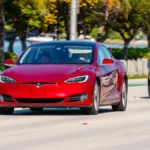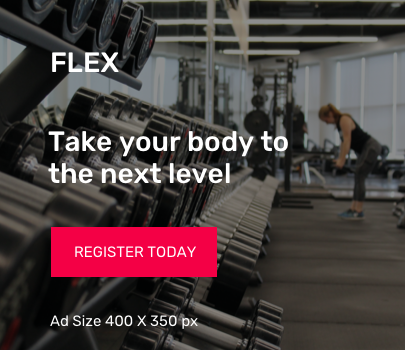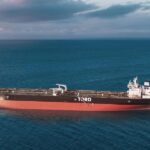Energy News Beat
Tariffs don’t apply to USA-made content. Some EVs are mostly made in the USA, others are mostly made in foreign countries.
By Wolf Richter for WOLF STREET.
The share of new EVs sold in the US in Q1 2025 rose to 9.83% of total new vehicles sold, up from a share of 9.26% in Q4 2024, and up from a share of 7.9% in Q1 2024, according to Experian’s quarterly report today. To be clear, these are battery-electric EVs without an internal combustion engine and do not include hybrids and plug-in hybrids.
We already saw that in California, non-Tesla EV sales soared in Q1 and all combined surpassed Tesla sales for the second quarter in a row, while Tesla sales dropped to a multiyear low, based on registrations data released by the California auto dealer association CNCDA earlier. Similar dynamics played out nationwide.
Top EV models and their US content.
US-made content in a vehicle is important amid the new tariff dynamics because tariffs don’t apply to US content; they only apply to the cost of foreign content (not retail price).
A Tesla Model 3, made in the USA with 75% US content, or a Model Y with 70% US content, is subject to much lower tariffs than a Ford Mustang Mach-E, made in Mexico with 13% US content, or a Honda Prologue, made by GM in Mexico with 12% US content.
So can Ford raise the price of a Mustang Mach-E to pass on the tariffs? Sure it can, but then sales will collapse and it can just go ahead and shut down production in Mexico because consumers will buy competing USA-made models from Tesla, Hyundai, and Volkswagen with a much lower tariff burden that manufacturers can easily eat without too much indigestion.
#1 and #2: Tesla’s Model Y was still by far the #1 bestselling EV, with a share of 25.4% of all EVs sold in Q1, despite all the Oh Elon! problems Tesla has faced. Tesla’s Model 3 was #2, with a share of 14.4% of all EVs.
Both models are made in the USA, and they both are among the vehicles with the most US-content: the Model 3 with 75% US content, which is at the very top of the list, and the Model Y with 70% US content, according to data from the National Highway Traffic Administration (NHTA).
#3 and #10, strange bedfellows: Ironically, the Honda Prologue was the #3 bestselling EV with a share of 4.9%, but Honda doesn’t have EV technology on the road – not yet. This is a General Motors product with different sheetmetal and some Honda features, based on the Chevy Blazer EV.
And even more ironically, the Prologue outsold the Blazer EV by a wide margin: the Blazer EV was the #10 bestselling EV with a share of just 2.0%.
Both the Chevy Blazer EV and the Hondo Prologue are made at GM’s Ramos Arizpe plant in Mexico. And they have just 12% US content.
#4: Ford’s Mustang Mach-E was the #4 bestselling EV, with a share of 4.5%. It is made in Mexico, with just 13% US content.
#5: Chevy’s Equinox EV with a share of 3.9%. It is made, you guessed it, at GM’s Ramos Arizpe plant in Mexico, with just 12% US content.
#6: Hyundai’s IONIQ 5 with a share of 3.1%. The vehicles that are made in the USA at its new plant in Georgia have 63% US content. But some versions are still imported from Korea.
#7: Tesla’s Cybertruck with a share of 2.72%, beating the next bestselling EV pickup, the Ford F-150 Lightning, by a hair. It is made in the USA and has 65% US content.
#8: Ford’s F-150 Lightning with a share of 2.71%. While it is assembled in the USA, it has only 29% US content.
#9: Volkswagen’s ID.4 with a share of 2.2%. Made in the USA, with a US content ranging from 68% to 71%, depending on the version.
Lease, loan, or cash: Monthly payments for the top 10 EVs.
Leasing is super-popular with EVs, and monthly payments are quite a bit lower than loan payments (though beware of the small print with leases, including the up-front payment).
Part of the reason is how the federal EV rebates are setup; they require a certain amount of US content of key components and materials, such as the battery. But vehicles that don’t qualify for the rebates can benefit from a loophole – as wide as a barndoor – that allows leased vehicles to qualify for the rebates, even if they don’t qualify under a purchase transaction [this nonsensical discrepancy is another reason why the rebates should be scuttled in the BBB].
Average monthly lease payments by model, of the top 10 leased EV models, range from $318 for the Volkswagen ID.4 (versus $667 for loans) to $684 for the BMW i4 (versus $866 for loans).
Honda is fully focused on leasing across all its models, and the Prologue was the most least EV out there in Q1. Leases accounted for 89.8% of the sales, while 8.6% of the sales were financed with loans, and 1.7% were cash deals. Average lease payments came to $486 (versus $708 for loans).
The second-most leased EV of the top 10 leased EVs was the ID.4, with 88.1% leased, 6.3% cash deals, and 5.6% loans.
The Cybertruck, by contrast, was the most cash-purchased of the top 10 EVs, with 24.3% of the sales being cash deals. Another 49.6% are loans, and only 26.1% are leases.
The Model Y was the most loan-financed of the top 10 EVs with 50.0% of the sales being financed with loans, while 40.1% were leased, and 9.8% were cash deals. Average lease payments of $426 (v. $646 for loans).
Model 3 sales were 52.3% leases, 37.3% loans, and 10.4% cash deals. Average lease payments were $402 (v. 657 for loans).
For the Chevy Equinox, with 56.2% of the sales being leases, the average lease payment was $380 (v. $623 financed).
We give you energy news and help invest in energy projects too, click here to learn more
Crude Oil, LNG, Jet Fuel price quote
ENB Top News
ENB
Energy Dashboard
ENB Podcast
ENB Substack
The post Despite Tesla’s Sales Drop, Total EV Penetration in the US Rises to Record 9.8%: BY Model & USA-Made Content appeared first on Energy News Beat.









